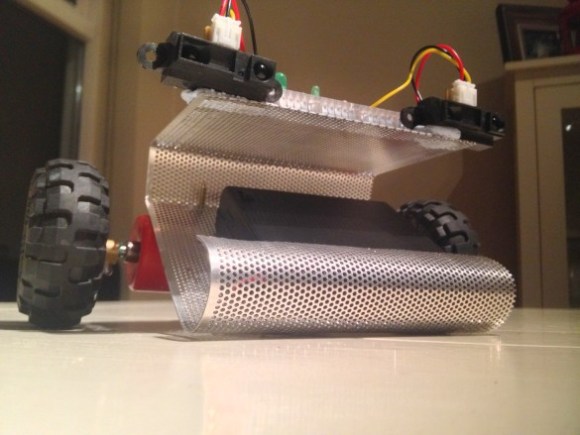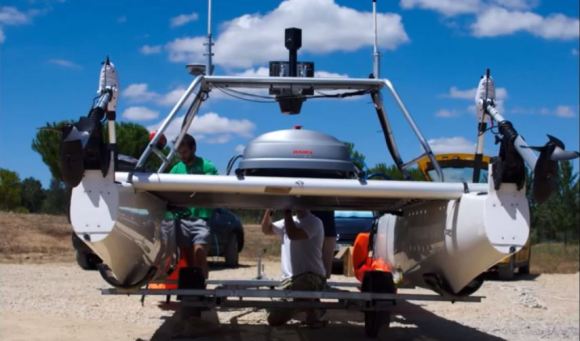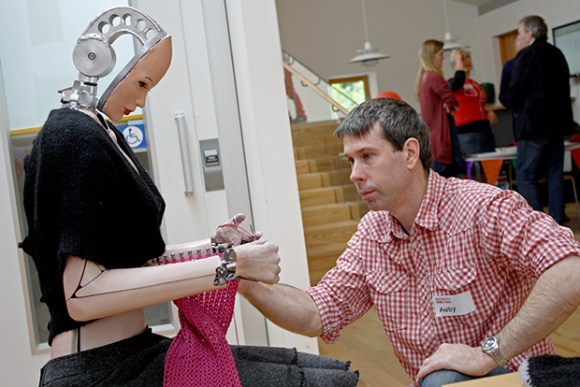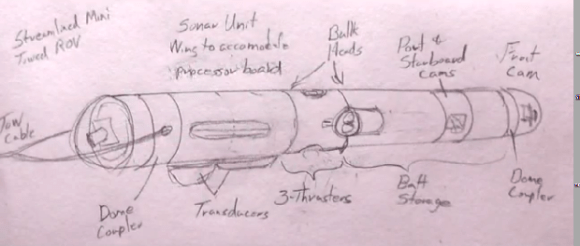
For one of [Aron’s] recent robotics modules at college he was tasked with building a small robot. He decided to make project Dodgebot, a cute and extremely quick robot that won’t run into things!
The body is made of perforated steel and supports the motor boxes with wheels (stolen from a toy perhaps?), two IR sensors, and the tidy protoboard on top to contain the electronics — seriously check out the wiring on it!
To control it he’s using an 18-pin dsPIC30F3012 and a SN754410NE driver. The robot works by detecting different states based on the distance measurements from each sensor, and then varying the output to each motor. It’s extremely quick and quite fun to watch as it seems to dodge everything in its path! See for yourself, after the break.
















